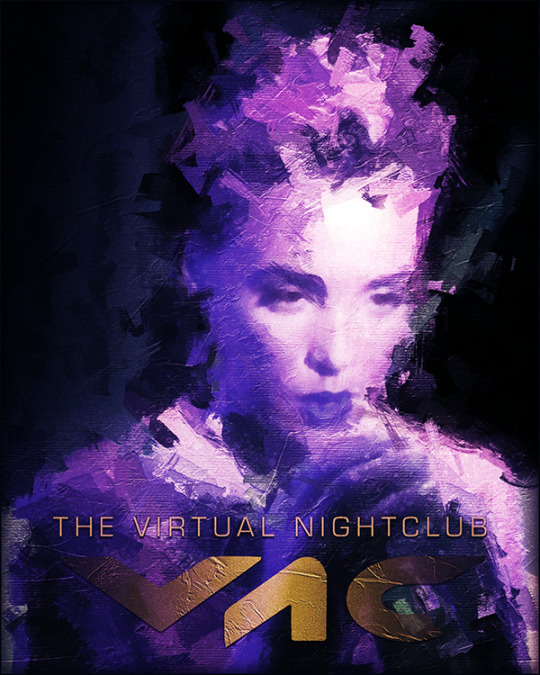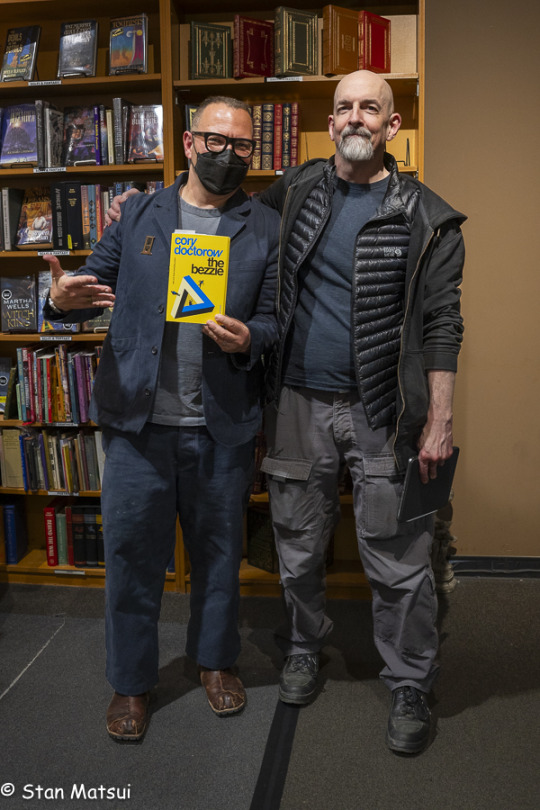#Neal Stephenson
Explore tagged Tumblr posts
Note
What book are u reading
quicksilver by neal stephenson 😁 book one of a real cool trilogy about all these characters across like a century during the industrial revolution. academics and nobility and such. real big scope. very cool i think👍
40 notes
·
View notes
Text
The Diamond Age retains the Neal Stephenson weird racism quota but it is very different because it puts fully half of all the racism in a single event in the final like 30 pages.
28 notes
·
View notes
Text









1st quarter readings:
Futuristic violence and fancy suits by Jason Pargin - Insane ideas, interesting characters, violence and funny.
Snow Crash by Neal Stephenson - A sci-fi classic that is not my favorite.
The first cate in space ate pizza by Mac Barnett - Short and fun reading for a rainy afternoon.
Parable of the sower by Octavia Butler - An eerie fiction too close to reality. Everyone must read!
Binti by Nnedi Okorafor - Great flow, lovely character, just a bit too naive ending.
Wool by Hugh Howey - Loved every single chapter of this book.
Starter villain by John Scalzi - Cats that can communicate with humans, interesting twists and funny scenes.
The dispossessed by Ursula Le Guin - A bit slow, but then it hooks you and when you understand the title your brain explodes.
Merlin’s tour of the universe by Neil deGrasse Tyson - I like the idea of questions and answers but the selection could be better.
Have you read any of these?
#bookish#sci fi#book list#book review#book readers#books and reading#futuristic violence and fancy suits#snow crash#the first cat in space ate pizza#parable of the sower#binti#wool#starter villain#the dispossessed#merlin’s tour of the universe#neil degrasse tyson#ursula le guin#john scalzi#hugh howey#nnedi okorafor#octavia butler#mac barnett#neal stephenson#jason pargin
65 notes
·
View notes
Text
Neal Stephenson’s “Polostan”

NEXT WEEKEND (Novem<p>placeholder </p>ber 8-10), I'll be in TUCSON, AZ: I'm the GUEST OF HONOR at the TUSCON SCIENCE FICTION CONVENTION.

Science fiction isn't collection of tropes, nor is it a literary style, nor is it a marketing category. It can encompass all of these, but what sf really is, is an outlook.
At the core of sf is an approach to technology (and, sometimes, science): sf treats technology as a kind of crux that the rest of the tale revolves around. The Bechdel test invites us to notice that in most fiction, stories revolve around men – that it's rare for two or more non-male characters to interact with one another, and if they do, that interaction is triggered by a man.
The sftnal version of this would go something like this: "a story gets increasingly stfnal to the extent that interactions among characters either directly relate to a technology, or are triggered by the consequences of such a relation, or fears, plans or aspirations for same."
(Note that this implies that science fiction is a spectrum: things can be more or less science fictional, and that gradient reflects the centrality of a technology to the narrative.)
No one's work demonstrates this better than Neal Stephenson. Stephenson's work covers a lot of settings and storytelling modes. His debut, The Big U, was a contemporary novel lampooning academic life. Then came Zodiac, another contemporary novel, but one where science – in this case, extremely toxic polychlorinated biphenyls – take center stage. Then came his cyberpunk classic, Snow Crash, which was unambiguously (and gloriously) science fiction.
A couple of books later, we got Cryptonomicon, a finance novel that treated money as a technology, and, notably, did so across both a near-future setting and the historic setting of WWII. In addition to being a cracking novel, Cryptonomicon is exciting in that it treats the technological endeavors of the past in exactly the same way as it does the imaginary technological endeavors of the future. Here's Stephenson fusing his contemporary sensibilities with his deep interests in history, and approaching historical fiction as an sf writer, doing the sftnal thing to gadgets and ideas that have been around for more than two generations.
Stephenson's next novel was Quicksilver, the first book of the massive "System of the World" trilogy, in which the extremely historical events of Newton and Leibniz's quest to discover "the calculus" are given a sweeping, world-spanning sftnal treatment. As "system of the world" suggests, Stephenson uses this sftnal trick to situate a scientific advancement in the context of a global, contingent, complex system that it both grows out of an defines. This is the pure water of science fiction, applied entirely to real seventeenth century events, and it's definitive proof that sf isn't a trope, a style or a category – but rather, it is a way of framing and understanding the world.
You can think of Stephenson's career up to this point as a series of experiments in applying the stfnal lens to events that are progressively less historical (and, with The Diamond Age, events that are atemporal inasmuch as the book is set in a futuristic revival of the Victorian Age). Experiments that range over contemporary settings, and then contemporary settings blended with historical settings, then a deep historical sf trilogy.
(It's rather exciting that these books came out right as William Gibson was entering his own "predicting the present" decade, where he exclusively published sf about the recent past, a prelude to a series of sf novels set in a future so far from our present that the characters literally have no record of which events led up to their own circumstances):
https://memex.craphound.com/2014/10/28/the-peripheral-william-gibson-vs-william-gibson/
Having proved how successful an historical sf novel could be, Stephenson then bopped around with a lot of stfnal historical ideas, from the "transmedia" 12th century setting of the Mongoliad to a madcap time-travel book (The Rise and Fall of DODO). Stephenson's work since then have been pretty straightforwardly sftnal, which means that he's a little overdue for a return to historical sf.
That's where Polostan comes in, the just-published inaugural volume of a new interwar series about the birth of atomic science:
https://www.harpercollins.com/products/polostan-neal-stephenson
Critics and even the publisher have called this a "spy novel" or a "historical novel" but it is neither of those. What Polostan is, is a science fiction novel, about spies in an historical setting. This isn't to say that Stephenson tramples on, or ignores spy tropes: this is absolutely a first-rate spy novel. Nor does Stephenson skimp on the lush, gorgeously realized and painstakingly researched detail you'd want from an historical novel (Stephenson has long enjoyed a fruitful collaboration with the brilliant researcher Lisa Gold, whom we can thank for much of the historical detail across his body of work).
But the overarching sensibility of this work is a world full of people who revolve around technology. You'd be hard-pressed to list more than a handful of actions taken by the characters that aren't driven by technology, and most of the dialog either concerns technology, or the actions that characters have taken in relation to technology. It's unmistakably and indelibly a science fiction novel.
It's great.
Polostan raises the curtain on the story of Dawn Rae Bjornberg, AKA Aurora Maximovna Artemyeva, whose upbringing is split between the American West in the early 20th century and the Leningrad of revolutionary Russia (her parents are an American anarchist and a Ukrainian Communist who meet when her father travels to America as a Communist agitator). Aurora's parents' marriage does not survive their sojourn to the USSR, and eventually Aurora and her father end up back in the States, after her father is tasked with radicalizing the veterans of the Bonus Army that occupied DC, demanding the military benefits they'd been promised:
https://en.wikipedia.org/wiki/Bonus_Army
After the efforts of Communist organizers in the Bonus Army were mercilessly crushed by George S Patton, Aurora ends up living in a Communist commune in Chicago, where she falls into a job selling comfortable shoes to the footsore women who visit the Century of Progress, as the 1933 World's Fair was known:
https://en.wikipedia.org/wiki/Century_of_Progress
At the Century of Progress, Aurora sits at the junction where many global currents are mixing: she is there when Mussolini's air armada lands on Lake Michigan to the cheers of thronged fascist sympathizers; and also when Neils Bohr lectures on the newly discovered – and still controversial – neutron. She is also exposed to her first boyfriend, a young physicist from New York, who greatly expands her interest in nuclear physics and also impregnates her.
This latter turn in her life sends Aurora back into the American west, where, after a complex series of misadventures and derring-do, she embarks on a career as a tommy gun-toting bank robber, part of an armed gang of her cowboy shirttail cousins.
All of this culminates in her return sojourn to the Soviet Union, where she first falls under suspicion of being an American spy, and then her recruitment as a Soviet spy.
Also: she plays a lot of polo. Like, on a horse.
This isn't just an unmistakably sftnal novel, it's also an unmistakably Stephensonian novel: embroidered, discursive, and brilliantly expositional:
https://maryrobinettekowal.com/journal/my-favorite-bit/my-favorite-bit-cory-doctorow-talks-about-the-bezzle/
It is funny, it is interesting, it is even daffy in places. It's sometimes absolutely horrifying. It skips around in time like a subatomic particle bouncing around in a theoretical physics model. It creates and resolves all manner of little subplots in most satisfying ways, but also ultimately exists just to tee up the main action, which will come in future volumes. It's a curtain raiser, and like any good opening number, it hooks you for what is to come.

If you'd like an essay-formatted version of this post to read or share, here's a link to it on pluralistic.net, my surveillance-free, ad-free, tracker-free blog:
https://pluralistic.net/2024/11/04/bomb-light/#nukular
#pluralistic#science fiction#post cyberpunk#historical fiction#cold war#nukes#neal stephenson#polostan#gift guide#reviews#books
86 notes
·
View notes
Text

Snow Crash is a trip
112 notes
·
View notes
Text
2500- Una de las responsabilidades del liderazgo es ocultar los temores personales, proyectar confianza en todo momento.
(Neal Stephenson)
#pensamientos#textos nocturnos#vida#textos#culture#books & libraries#escritos de amor#frases#palabras#amor#neal stephenson#liderazgo#motivacion#cultura#historia#entrevista
15 notes
·
View notes
Text
Virtual Nightclub: A Game About Time (Windows, Thumb Candy, 1997)
An ambitious sci-fi adventure game which became lost media until 2016. You can download it, pre-configured to run on modern versions of WIndows, here, including a comprehensive guide and a very different unfinished beta version.
You can read the Lost Media Wiki article about it here, and read the guide's writer's thoughts on the game here.




#internet archive#game#games#video games#videogame#videogames#computer game#computer games#adventure game#adventure games#cd rom#cd rom game#multimedia#mini games#obscure game#obscure games#lost media#lost media wiki#herbie hancock#redman#neal stephenson#1997#1990s#90s
344 notes
·
View notes
Text
What I thought Snow Crash was going to be; a dark serious cyberpunk novel about hacking and murder.
What Snow Crash turned out to be; world's most dangerous pizza delivery guy and a 15 year old skateboarder unravel a mystery involving ancient Sumerian, with assistance from the mafia, and a hypersonic attack dog. The enemies are organised religion and a man with "antisocial tendencies" tattooed on his forehead.
I loved this goddamn book.
12 notes
·
View notes
Text



been reading Snow Crash and i really like it. charmed by the dynamic of Hiro being Theoretically the Coolest Person You’ll Ever Meet (ninja super hacker, caries swords around, roommates with a rock star) and YT being Much Cooler Than Him (15 year old skater girl)
#Hiro’s necklace is his name in kanji :3c#and YT’s skateboard says URS TRULY in the inkling font#my art#cyberpunk#neal stephenson#Hiro Protagonist#Y.T.#YT#snow crash#i guess that’s kinda all the tagging I can do lol#this is for all 3 fans of this book. and also my mom 🫶 hi mom#character design
8 notes
·
View notes
Text





I'd give anything to know which unworthy billionaires took these home.
8 notes
·
View notes
Text
im kindof obsessed with how much neal stephenson has written actually. i think i need to read all of it
36 notes
·
View notes
Text

Seven of Nine does "Snow Crash"
#seven of nine#snow crash#y.t.#neal stephenson#raddiks#kourier#biosuit#blue and orange#coverall#borg#cyberpunk#scifi#manip#lizzy chrome#photomanip#photoshop#star trek voyager#biosuit manips
11 notes
·
View notes
Text
Gibson is of course not actually that interested in technology, he's really interested in how people use technology, he's interested in the ways it makes you relate to people, which is why so many of his stories are about using technology to talk to someone. Stephenson is really interested in technology and he basically thinks it doesn't do much at all to change how you interact with other people at all, which is why Stephenson books still feature so much face-to-face talk.
29 notes
·
View notes
Text
Cyberpunk trifecta



185 notes
·
View notes
Text

Y.T. and Fido, by Sara Garcia
#Y.T.#yt#fido#snow crash#fan art#art#digital art#rat thing#thrasher#kourier#RaidiKS#neal stephenson#cyberpunk
28 notes
·
View notes
Text
Anathem
I just finished reading Anathem by Neal Stephenson, and it was hard. And I don't say this as a form of criticism, but as a satisfaction of overcoming a challenge. I don't believe I understood all the philosophical and scientific discussions - Dialog - throughout the reading; on the contrary, there were some things I gave up trying to understand in order to maintain my sanity and be able to move forward. This is a book that requires attention to detail, engagement and patience.
"People have a need to feel that they are part of some sustainable project. Something that will go on without them. It creates a feeling of stability. I believe that the need for that kind of stability is as basic and as desperate as some of the other, more obvious needs."
It's a thousand pages that mix alternative history, close encounters of the third kind, utopian fantasy of futuristic science fiction, multiple religions and philosophical treatise, all highly detailed and not at all obvious. But I'm happy to have finished this challenge and to have understood, at least in part, the Narrative.

Illustration by Patrick Arrasmith
“Nothing is more important than that you see and love the beauty that is right in front of you, or else you will have no defense against the ugliness that will hem you in and come at you in so many ways.”


Diagrams by Fraa Erasmas in Calca 1: Cutting the Cake
A book that combines levels of reality, space travel, monks, tiling, math nerds and a giant icosahedron in orbit.
12 notes
·
View notes